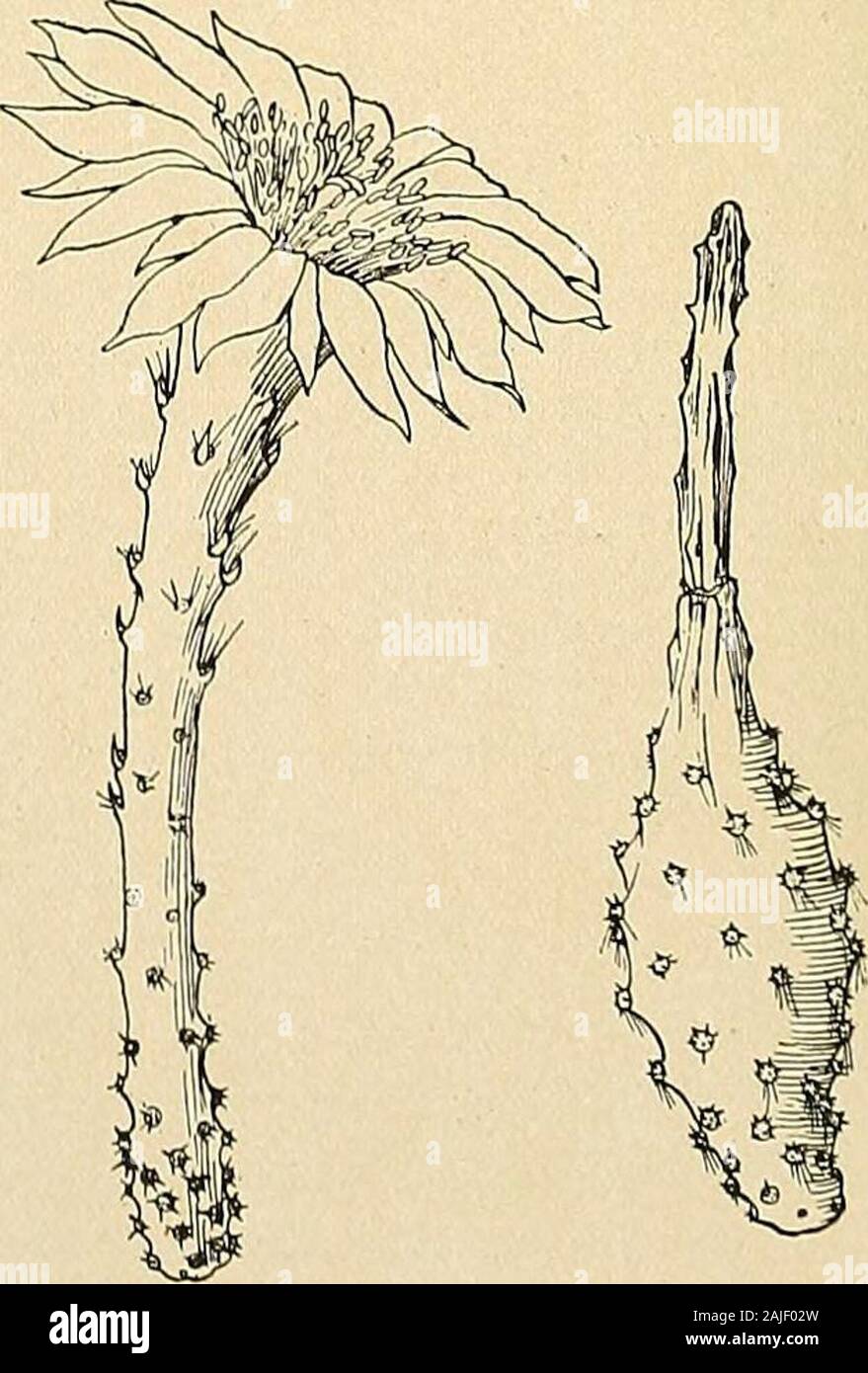The Cactaceae : descriptions and illustrations of plants of the cactus family . Fig. 167.—Flower of Peniocereus greggii. X0.5.Fig. 168.—Fruit of same. X0.5., DENDROCEREUS. II3 In the southwest it is called deerhorn cactus or night-blooming cereus. The petals were first described as pale purple, but this was probably incorrect. The species is found occasionally in valleys and on mesas in its range, but is neverabundant. It is hard for the novice to find, as the short, dull-colored stems resemble deadsticks or the common sage bush, while the large flowers appear only at night. Mrs. W. R. Kitt in

Image details
Contributor:
The Reading Room / Alamy Stock PhotoImage ID:
2AJF02WFile size:
7.2 MB (293.8 KB Compressed download)Releases:
Model - no | Property - noDo I need a release?Dimensions:
1301 x 1922 px | 22 x 32.5 cm | 8.7 x 12.8 inches | 150dpiMore information:
This image is a public domain image, which means either that copyright has expired in the image or the copyright holder has waived their copyright. Alamy charges you a fee for access to the high resolution copy of the image.
This image could have imperfections as it’s either historical or reportage.
The Cactaceae : descriptions and illustrations of plants of the cactus family . Fig. 167.—Flower of Peniocereus greggii. X0.5.Fig. 168.—Fruit of same. X0.5., DENDROCEREUS. II3 In the southwest it is called deerhorn cactus or night-blooming cereus. The petals were first described as pale purple, but this was probably incorrect. The species is found occasionally in valleys and on mesas in its range, but is neverabundant. It is hard for the novice to find, as the short, dull-colored stems resemble deadsticks or the common sage bush, while the large flowers appear only at night. Mrs. W. R. Kitt informs us that in cultivation this plant sometimes reaches a heightof 6 feet. About Tucson, Arizona, it flowers usually between June 12 and 16 and many of theflowers appear on the same night everywhere throughout the desert. The flowers are ex-tremely fragrant and collectors are thus guided when searching for the plants. Illustrations: Gard. Chron. III. 34:1.43; Cact. Emorys Exped. 157. b 6; Forster, Handb. Cact. ed. 2. f. 14, 94; Monatsschr. Kakteenk. 5: 150, 151; 14: 135